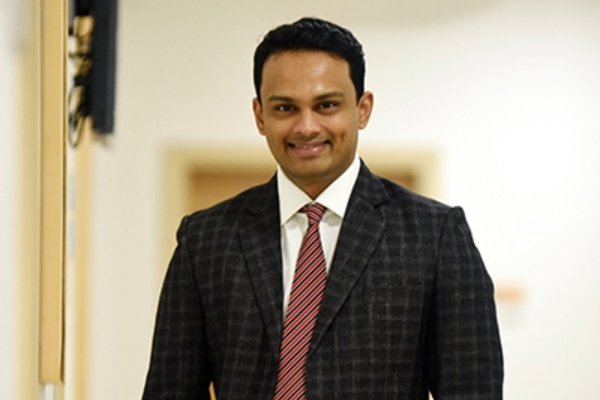Cataract Surgery Treatment
What Is Cataract Surgery?
Cataract surgery is performed to treat cataracts. When a cataract forms, the lens becomes cloudy, leading to blurry or distorted vision. If a cataract makes it hard for you to carry out your everyday activities, your doctor may recommend cataract surgery.
Cataract surgery is performed by an eye doctor (ophthalmologist) on an outpatient basis, which means you don’t have to stay in the hospital after the surgery. Cataract eye surgery is very common and is typically a safe procedure.
During cataract surgery, the cloudy lens is extracted and replaced with an artificial intraocular lens (IOL). Some of the best lenses used in cataract surgery include monofocal IOL, multifocal IOL, toric IOL, monovision IOL, etc. The surgery usually takes less than an hour to complete and has a high success rate.
What Are The Types Of Cataract Surgery?
The technique used in cataract surgery has changed completely over the last two decades. There are different types of cataract surgery techniques, each with its own mechanism of removing the cloudy lens and placing the intraocular lens. The main 6 types of cataract surgery include the following:
- Phacoemulsification (phaco cataract surgery): Phacoemulsification is a cataract surgery method in which the internal lens of the eye, which has formed a cataract, is emulsified using an ultrasonic handpiece and aspirated from the eye. After removing the cataract, an artificial IOL is inserted and positioned in the lens capsule, where the natural lens was located. This procedure minimizes the incision size and reduces the recovery time and risk of surgery-induced astigmatism. Phacoemulsification is best suited to soft cataracts, where the ultrasonic energy needed is moderate, and insertion of foldable intraocular prosthetic lenses is possible.
- Extracapsular Cataract Extraction (ECCE): ECCE is an older technique that is less commonly used today but may still be used in some instances. It involves making a larger incision in the cornea or sclera (the white part of the eye) to remove the cloudy lens in one piece rather than breaking it up like in phacoemulsification. The IOL is then implanted through the incision and placed in the lens capsule. ECCE is commonly used when phacoemulsification may not be suitable, such as in cases of very advanced cataracts or when additional procedures, like planting a special lens type, are required. Larger incision used in ECCE often needs stitches to close the wound.
- Laser-Assisted Cataract Eye Surgery (LACS): Laser-assisted cataract surgery involves using a laser to perform the surgery. The laser is used to make precise incisions in the cornea, to open the lens capsule, and to fragment the cataract. This method can offer increased precision and reduce the need for specific instruments during surgery.
- Femtosecond Laser-Assisted Cataract Surgery (FLACS): Femtosecond laser-assisted cataract surgery is a specific type of laser cataract surgery. It utilizes a femtosecond laser to create corneal incisions, open the lens capsule, and break the cataract. This technique aims to improve precision and replaces many steps during cataract surgery requiring a blade.
- Microincision Cataract Surgery (MICS): MICS is a type of cataract-removal surgery that uses a tiny incision, usually less than 1.8 mm. This procedure is minimally invasive and can be completed in 10 minutes or less. It is often used to treat patients with very small or dense cataracts. Many people who require cataract surgery can avoid traditional, open-incision surgery with MICS. This is because the small incision used for this procedure means there is less trauma and scarring, which can lead to a shorter recovery time than traditional cataract removal.
- Small Incision Cataract Surgery (SICS): SICS cataract surgery is a modern surgical technique used to remove a cataract. It is an advanced version of the traditional extracapsular cataract extraction (ECCE) procedure, and it is considered a safe and effective method for cataract removal.
The choice of cataract surgery technique depends on various factors, including the severity and characteristics of the cataract, the surgeon’s expertise, the patient’s eye health, etc. Your doctor will evaluate your specific case and recommend the most suitable technique for you.
How Is Cataract Diagnosed?
To determine whether you have a cataract, your eye specialist will check your medical history and symptoms and conduct an eye examination. Your doctor may conduct several tests, including:
- Visual Acuity Test: In this test, you will be asked to read the letters on a chart to assess the sharpness and clarity of your vision. Your eyes will be tested one at a time to recognize signs of impairment.
- Slit-Lamp Examination: A slit-lamp examination, also known as biomicroscopy, involves the use of a specialized microscope called a slit lamp. Your doctor will examine your eyes with this instrument, which delivers a magnified view of the front structures of the eye, including the cornea, iris, lens, and the space between them. This examination allows them to know the presence and severity of cataracts.
- Retinal Examination: For the retinal exam, your doctor will use eye drops to dilate (open wide) your pupils. This allows the doctor to view the retina for signs of cataracts better.
- Refraction Test: A refraction test may be performed to determine the extent of any refractive error (e.g., nearsightedness, farsightedness, astigmatism) that may coexist with cataracts.
- Visual Field Testing: This test determines how much side (or peripheral) vision you have and how much surrounding area you can see. The most common type of visual field test in a regular eye exam is called a confrontation field test, in which the doctor briefly flashes several fingers in each of the four quadrants of your visual field while seated opposite you. It is commonly performed to detect and monitor conditions such as cataracts, glaucoma, and neurological disorders that may affect vision.
- Optical Coherence Tomography (OCT): OCT is a non-invasive imaging technique that provides cross-sectional images of the eye’s structures, including the cornea, iris, and lens. It utilizes light waves to generate high-resolution, precise images of the lens and other parts of the eye. OCT can help determine the thickness and integrity of the lens, assess any associated macular changes or swelling, and evaluate the impact of cataracts on the overall eye health.
- Contrast Sensitivity Test: Contrast sensitivity testing evaluates your ability to differentiate objects with low contrast, such as shades of gray or slight differences in light and dark. This test estimates your ability to discern details under various lighting conditions, which can be affected by cataracts.
What Is The Procedure Of Cataract Surgery?
Eye Cataract surgery procedure generally involves the following steps:
- Anesthesia: Cataract surgery is usually performed under local anesthesia, which involves numbing the eye with eye drops or an injection near the eye. Therefore, your doctor will numb your eyes so you won’t feel anything during the surgery. This will make sure that you are comfortable and pain-free during the procedure. In some possibilities, general anesthesia may also be used.
- Incision: An incision is made in the cornea. This incision can be made manually using a surgical blade in case of extracapsular cataract extraction (ECCE) or created with the assistance of a femtosecond laser in laser-assisted eye cataract surgery.
- Capsulotomy: After creating an incision, a circular opening is made in the front portion of the lens capsule. This allows access to the cataract-affected lens.
- Phacoemulsification or Lens Fragmentation: In phacoemulsification, an ultrasonic device breaks up the cataract-affected lens into small fragments using high-frequency sound waves. The fragments are then suctioned out through the same device. However, in manual or laser-assisted techniques, the lens may be manually removed or fragmented using a laser.
- IOL Implantation: Once the cataract is extracted, an IOL is implanted through the incision and positioned within the lens capsule. The IOL is designed in such a way that it can replace the natural lens and restore clear vision.
- Wound Closure: In most cases, the incision is self-sealing and does not need stitches. It will heal naturally over time. However, in the case of the ECCE technique, your surgeon may use sutures to close the incision.






